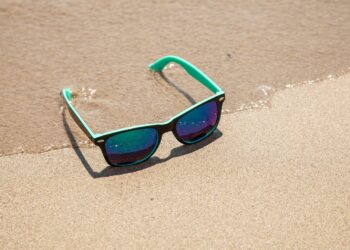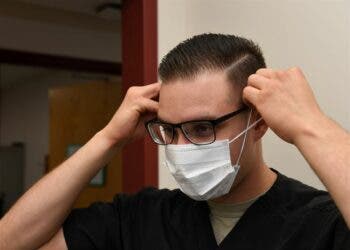
The days of swapping reading glasses or wearing bifocals might be numbered. Researchers from the University of Utah demonstrated a pair of ‘smart glasses’ based on liquid-based lenses which can automatically adjust the focus on what a person is directly seeing. It doesn’t matter if the focused object is far away or close up. niversity of Utah electrical and computer engineering professor Carlos Mastrangelo
“Most people who get reading glasses have to put them on and take them off all the time,” says Carlos Mastrangelo, University of Utah electrical and computer engineering professor.. “You don’t have to do that anymore. You put these on, and it’s always clear.”
Our eyes are naturally able to adjust the focal depth through a structure in the eye called the cornea. As people age, the eye’s lens gets denser making it harder for the ciliary muscles to bend the lens. This is why a lot of people in their 40s or 50s end up suffering from farsightedness (presbyopia) or nearsightedness (myopia). The solution is to order glasses in order to focus on objects far away or close by.
[ALSO SEE] How the eye works
The glasses developed by Mastrangelo have lenses made of glycerin, a neutral, sweet-tasting, colorless, thick liquid. The glycerin is sandwiched by a rubber-like membrane. The rear membrane in each of the two lenses is connected to three mechanical actuators that push the membrane to and fro like a piston. This movement changes the curvature of the liquid lens and, consequently, the focal length between the lens and the eye.
Check out the video below to get a feel of how these glasses work.
The smart glasses’ frame is also a custom work. It’s fitted with electronics and a battery that power and control the actuators. Pulses of infrared light fired from a distance meter mounted inside the bridge of the glasses measures the distances from the glasses to an object to be focused. It’s the meter that instructs the actuators how to curve the lenses in order to focus the measured object.
Re-focusing happens very fast. The researchers say the glasses can adjust the focus from one object to another in only 14 milliseconds.

To calibrate the glasses to each individual users’ eyesight needs a prescription from a doctor is uploaded to a smartphone app. The phone then sends the calibration data to the glasses via a Bluetooth connection. You only need to do this once or every time your prescription changes. That’s another advantage to the smart glasses: you only need to buy a pair once. Right now, with a new prescription people with eyesight problems need to order new glasses.
Granted, the prototype made in Utah and showcased at last month’s CES in Las Vegas isn’t the most stylish. The researchers, however, are confident they can scale it down and use smaller, lighter components. A startup called Sharpeyes LLC has been incorporated to bring this product to the market, possibly as early as in three years.
The smart glasses have been described in a paper published in journal Optics Express.






